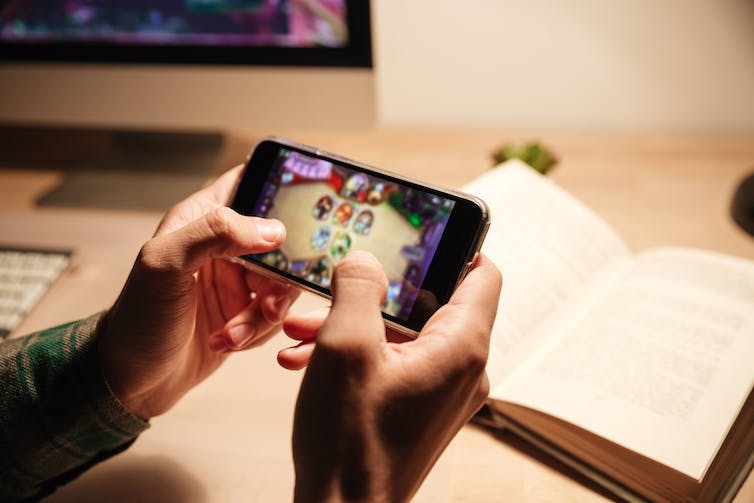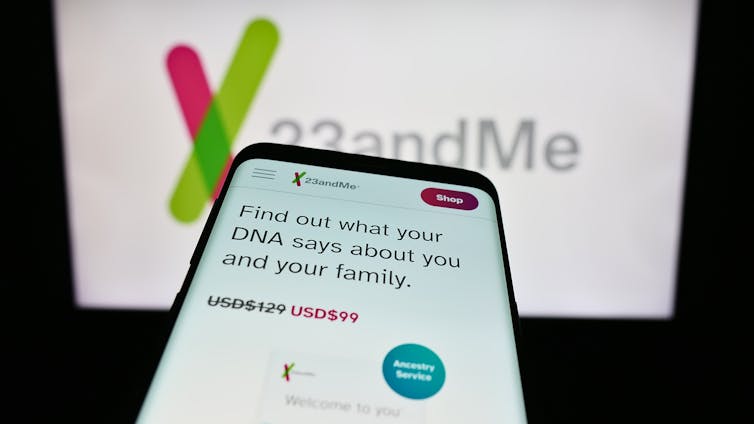Most of us go online multiple times a day. About half of 18–29 year olds surveyed in a 2021 Pew Research Study said they are “almost constantly” connected.
How are we to make sense of this significant digital dimension of modern life?
Many questions have rightly been asked about its broader consequences for society and the economy. But there remains a simpler question about what motivates people across a range of ages, occupations and cultures to be so absorbed in digital connection.
And we can turn this question on ourselves: why am I online?
What are we doing when we go online?
As the American sociologist Erving Goffman pointed out, asking “What is it that’s going on here?” about human behaviour can yield answers framed at different levels. These range from our superficial motives to a deeper understanding of what we are “really” doing.
Sometimes we might be content to explain our online behaviour in purely practical terms, like checking traffic routes or paying a bill. Other times we might struggle to articulate our reasons for going or remaining online.
Why are we continually looking at our phones or computers, when we could be getting on with physical tasks, or exercising, or meditating, or engaging more fully with the people who are physically around us?
The ever-present need to manage our emotions
As researchers of human-computer interaction, we are exploring answers in terms of the ever-present need to manage our emotions. Psychologists refer to this activity as emotion regulation.
Theories of the nature and function of emotions are complex and contested. However, it is safe to say they are expressions of felt needs and motivations that arise in us through some fusion of physiology and culture.
During a typical day, we often feel a need to alter our emotional state. We may wish to feel more serious about a competitive task or more sad at a funeral. Perhaps we would like to be less sad about events of the past, less angry when meeting an errant family member, or more angry about something we know in our heart is wrong.
One way to understand our frequent immersions into online experience is to see them as acts within a broader scheme of managing such daily emotional demands. Indeed, in earlier research we found up to half of all smartphone use may be for the purpose of emotional regulation.
Digital technologies are becoming key tools of emotion regulation
Over the pandemic lockdowns of 2020–21 in Melbourne, Australia, we investigated how digital technologies are becoming key tools of emotion regulation. We were surprised to find that people readily talked of their technology use in these emotion-managing terms.
Occasionally, this involved specially designed apps, for mindfulness and so on. But more often people relied on mundane tools, such as using social media alongside Zoom to combat feelings of boredom or isolation, browsing for “retail therapy”, playing phone games to de-stress, and searching online to alleviate anxiety about world events.
Shutterstock
To some extent, these uses of digital technology can be seen as re-packaging traditional methods of emotion management, such as listening to music, strengthening social connections, or enjoying the company of adorable animals. Indeed, people in our study used digital technologies to enact familiar strategies, such as immersion in selected situations, seeking distractions, and reappraising what a situation means.
However, we also found indications that digital tools are changing the intensity and nature of how we regulate emotions. They provide emotional resources that are nearly always available, and virtual situations can be accessed, juxtaposed and navigated more deftly than their physical counterparts.
Some participants in our study described how they built what we called “emotional toolkits”. These are collections of digital resources ready to be deployed when needed, each for a particular emotional effect.
A new kind of digital emotional intelligence
None of this is to say emotion regulation is automatically and always a good thing. It can be a means of avoiding important and meaningful endeavours and it can itself become dysfunctional.
In our study of a small sample of Melburnians, we found that although digital applications appeared to be generally effective in this role, they are volatile and can lead to unpredictable emotional outcomes. A search for energising music or reassuring social contact, for example, can produce random or unwanted results.
A new kind of digital emotional intelligence might be needed to effectively navigate digital emotional landscapes.
An historic shift in everyday life
Returning to the question: what am I doing online? Emotion regulation may well be the part of the answer.
You may be online for valid instrumental reasons. But equally, you are likely to be enacting your own strategies of emotion regulation through digital means.
It is part of an historic shift playing out in how people negotiate the demands of everyday life.
Read more:
Why comparing technology to drugs isn’t simply a question of addiction




